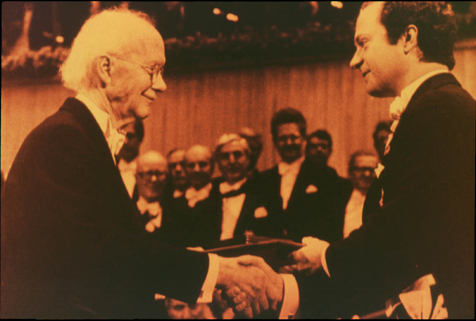
Faculty Research 1980 - 1989
Genetic and developmental regulation of the lipoprotein lipase gene: loci both distal and proximal to the lipoprotein lipase structural gene control enzyme expression.
Document Type
Article
Publication Date
1989
Keywords
Animal, Gene-Expression-Regulation, Genes-Structural, Lipoprotein-Lipase: ge, Mice, Mice-Inbred-Strains, Myocardium: me, Restriction-Fragment-Length-Polymorphisms, RNA-Messenger: me, SUPPORT-NON-U-S-GOVT, SUPPORT-U-S-GOVT-NON-P-H-S, SUPPORT-U-S-GOVT-P-H-S
First Page
1473
Last Page
1482
JAX Source
J Biol Chem 1989 Jan 25; 264(3):1473-82.
Grant
HL28481, GM18684, AM30292
Abstract
We report here a study of the developmental and genetic control of tissue-specific expression of lipoprotein lipase, the enzyme responsible for hydrolysis of triglycerides in chylomicrons and very low density lipoproteins. Lipoprotein lipase (LPL) mRNA is present in a wide variety of adult rat and mouse tissues examined, albeit at very different levels. A remarkable increase in the levels of LPL mRNA occurs in heart over a period of several weeks following birth, closely paralleling developmental changes in lipase activity and myocardial beta-oxidation capacity. Large increases in LPL mRNA also occur during differentiation of 3T3L1 cells to adipocytes. As previously reported, at least two separate genetic loci control the tissue-specific expression of LPL activity in mice. One of the loci, controlling LPL activity in heart, is associated with an alteration in LPL mRNA size, while the other, controlling LPL activity in adipose tissue, appears to affect the translation or post-translational expression of LPL. To examine whether these genetic variations are due to mutations of the LPL structural locus, we mapped the LPL gene to a region of mouse chromosome 8 using restriction fragment-length polymorphisms and analysis of hamster-mouse somatic cell hybrids. This region is homologous to the region of human chromosome 8 which contains the human LPL gene as judged by the conservation of linked genetic markers. Genetic variations affecting LPL expression in heart cosegregated with the LPL gene, while variations affecting LPL expression in adipose tissue did not. Furthermore, Southern blotting analysis indicates that LPL is encoded by a single gene and, thus, the genetic differences are not a consequence of independent regulation of two separate genes in the two tissues. These results suggest the existence of cis-acting elements for LPL gene expression that operate in heart but not adipose tissue. Our results also indicate that two genetic mutations resulting in deficiencies of LPL in mice, the W mutation on chromosome 5 and the cld mutation on mouse chromosome 17, do not involve the LPL structural gene locus. Finally, we show that the gene for hepatic lipase, a member of a gene family with LPL, is unlinked to the gene for LPL. This indicates that combined deficiencies of LPL and hepatic lipase, observed in humans as well as in certain mutant strains of mice, do not result from focal disruptions of a cluster of lipase genes.
Recommended Citation
Kirchgessner TG,
LeBoeuf RC,
Langner CA,
Zollman S,
Chang CH,
Taylor BA,
Schotz MC,
Gordon JI,
Lusis AJ.
Genetic and developmental regulation of the lipoprotein lipase gene: loci both distal and proximal to the lipoprotein lipase structural gene control enzyme expression. J Biol Chem 1989 Jan 25; 264(3):1473-82.

